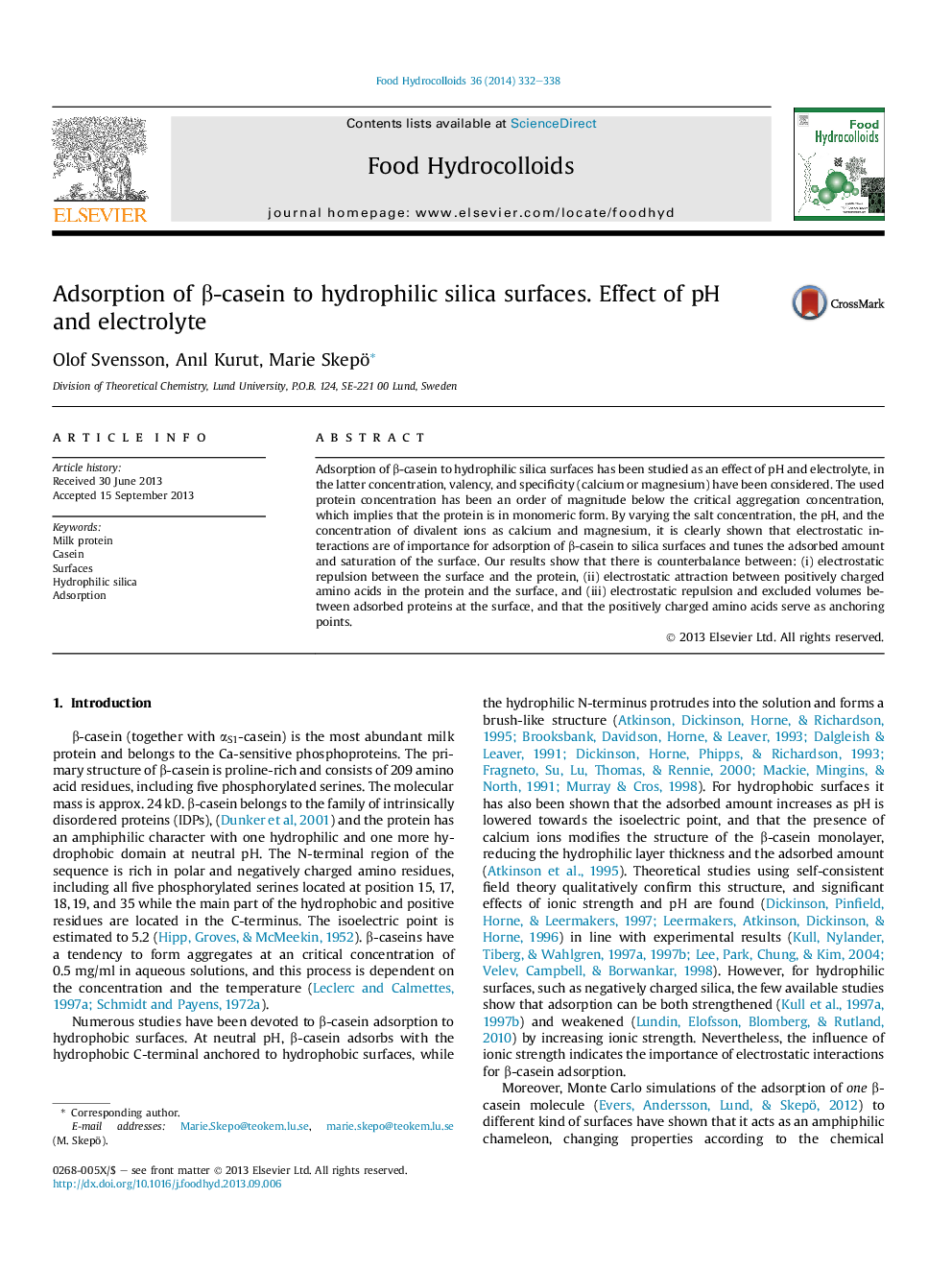| Article ID | Journal | Published Year | Pages | File Type |
|---|---|---|---|---|
| 603915 | Food Hydrocolloids | 2014 | 7 Pages |
Adsorption of β-casein to hydrophilic silica surfaces has been studied as an effect of pH and electrolyte, in the latter concentration, valency, and specificity (calcium or magnesium) have been considered. The used protein concentration has been an order of magnitude below the critical aggregation concentration, which implies that the protein is in monomeric form. By varying the salt concentration, the pH, and the concentration of divalent ions as calcium and magnesium, it is clearly shown that electrostatic interactions are of importance for adsorption of β-casein to silica surfaces and tunes the adsorbed amount and saturation of the surface. Our results show that there is counterbalance between: (i) electrostatic repulsion between the surface and the protein, (ii) electrostatic attraction between positively charged amino acids in the protein and the surface, and (iii) electrostatic repulsion and excluded volumes between adsorbed proteins at the surface, and that the positively charged amino acids serve as anchoring points.
Graphical abstractFigure optionsDownload full-size imageDownload as PowerPoint slide
